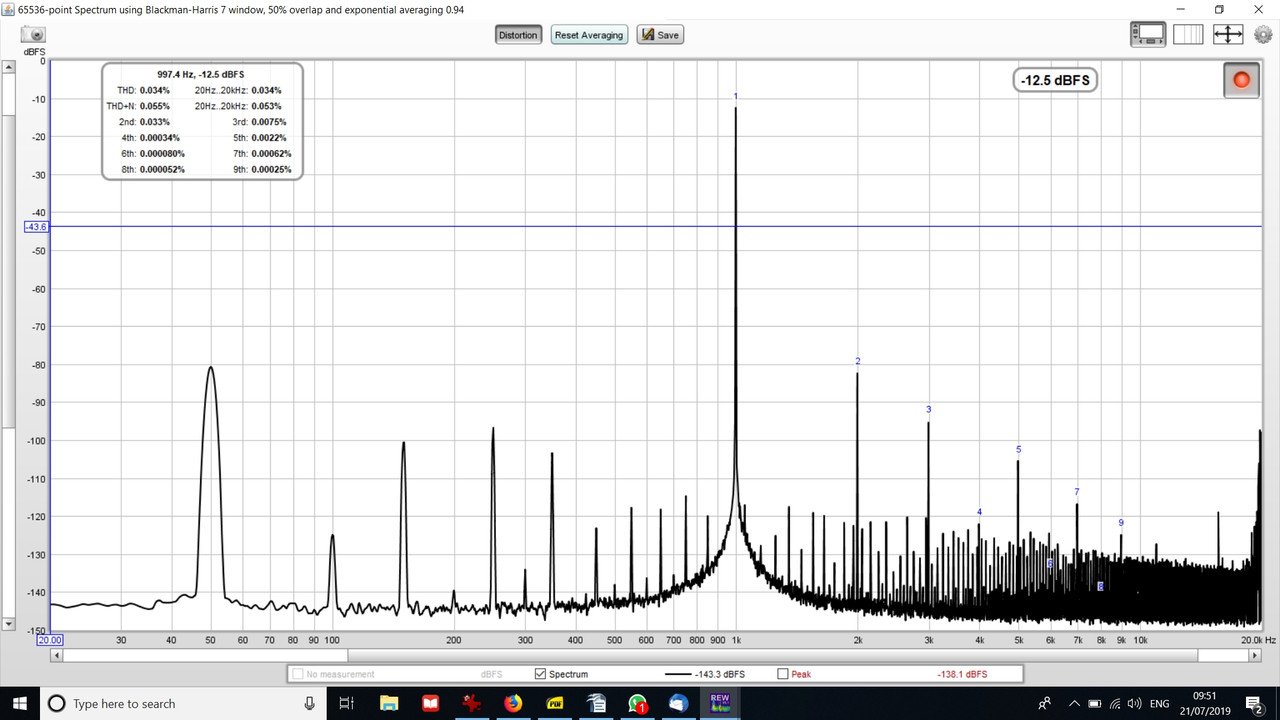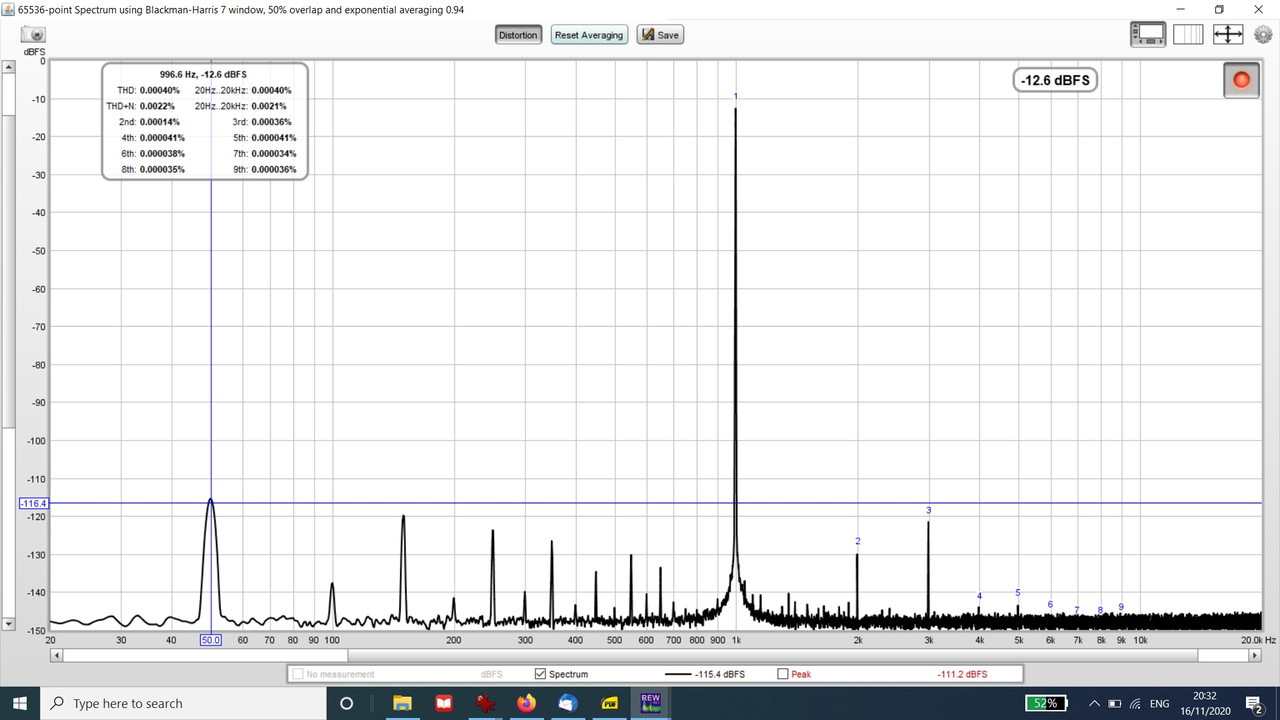S-Man
StrivingON
As a result of a request in the NCC300 thread I thought it was worth starting a separate thread for the discussion of measurement equipment.
This is what I use to measure the distortion of amps, line stages, active crossovers etc:
1) Ultra low distortion 1KHz sine wave generator;
https://www.eevblog.com/forum/testgear/looking-for-ultra-low-distortion-1khz-sine-generator/
I use Viktor's module which used to be available on Ebay. There is also lots of discussion about this on DIYAudio.
I have found that despite Viktor's instructions that an LM317(HV) reg set to 35V is good enough to supply it, actually the supply is critical. I ended up powering mine from two 9V batteries (which negates the usefulness of the on board shunt regs). If using a mains fed PS then a transformer with an interwinding screen is neccessary, although I can also get good results from a Farnell L30 PSU supplied by an isolation transformer).
1a) Here is another possibility which avoids the supply issues and has a better attenuator setup than Viktor's. It does have higher distortion, but it's good enough!:
https://www.akitika.com/1kHzOscillator.html
2) Some sort of ADC
I use a 1st gen Focusrite 2i2.
The laptop used with this should be powered from its battery. Mains power, at least with my laptop, increases the noise floor by 10 to 20dB.
3) An attenuator - assuming you want to measure things >1V without blowing the 2i2's input stages
- See the "building your own attenuator" on the Akitika page.
I recommend incuding the clipping LEDs... very useful.
4) A lead to connect the DUT to the 2i2:
I can't remember exactly how I did this. It has a stereo 1/4" jack plug on the 2i2 end and stackable 4mm plugs on the amp end. Needs to interface the single ended amp output to the balanced input of the 2i2
5) REW or similar. I will have to check all the settings I use.
Here is the baseline perfomance of the sine wave gen and 2i2. I run all my tests at -12.6dB as I found this gives the lowest distortion. The distortion is dominated by the 2i2, hence my comments about the Akitika generator above.

By way of example here is what a JLH 10W (15W in my case) output looks like at my "standard" test condition of ~1W into 10R:

Some people get jolly excited by the decaying harmonic profile
This is what I use to measure the distortion of amps, line stages, active crossovers etc:
1) Ultra low distortion 1KHz sine wave generator;
https://www.eevblog.com/forum/testgear/looking-for-ultra-low-distortion-1khz-sine-generator/
I use Viktor's module which used to be available on Ebay. There is also lots of discussion about this on DIYAudio.
I have found that despite Viktor's instructions that an LM317(HV) reg set to 35V is good enough to supply it, actually the supply is critical. I ended up powering mine from two 9V batteries (which negates the usefulness of the on board shunt regs). If using a mains fed PS then a transformer with an interwinding screen is neccessary, although I can also get good results from a Farnell L30 PSU supplied by an isolation transformer).
1a) Here is another possibility which avoids the supply issues and has a better attenuator setup than Viktor's. It does have higher distortion, but it's good enough!:
https://www.akitika.com/1kHzOscillator.html
2) Some sort of ADC
I use a 1st gen Focusrite 2i2.
The laptop used with this should be powered from its battery. Mains power, at least with my laptop, increases the noise floor by 10 to 20dB.
3) An attenuator - assuming you want to measure things >1V without blowing the 2i2's input stages
- See the "building your own attenuator" on the Akitika page.
I recommend incuding the clipping LEDs... very useful.
4) A lead to connect the DUT to the 2i2:
I can't remember exactly how I did this. It has a stereo 1/4" jack plug on the 2i2 end and stackable 4mm plugs on the amp end. Needs to interface the single ended amp output to the balanced input of the 2i2
5) REW or similar. I will have to check all the settings I use.
Here is the baseline perfomance of the sine wave gen and 2i2. I run all my tests at -12.6dB as I found this gives the lowest distortion. The distortion is dominated by the 2i2, hence my comments about the Akitika generator above.

By way of example here is what a JLH 10W (15W in my case) output looks like at my "standard" test condition of ~1W into 10R:

Some people get jolly excited by the decaying harmonic profile
Last edited:



 IMG_2968
IMG_2968